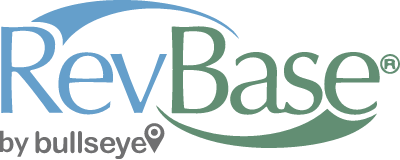With a marketing asset management system, it’s essential for people to be able to add content easily, quickly, and accurately. In a typical marketing department, several people are familiar with the content and how it’s used within the organization. Ideally they’re authorized to add, upload, and edit materials within the marketing asset management system.
For many marketing departments, having a few people doing this job – typically within the marcomm area – works well when hundreds or even several thousand marketing assets are involved. However, with global marketing and greater complexity, it’s increasingly common to have many content managers – including managers around the world – responsible for keeping content up-to-date within the marketing asset management system.
Coordinating content input from a variety of locations.
The system needs to provide models or methods of coordinating input from all content locations. This can be accomplished in a number of ways. Rules can allow a given content manager to upload assets to one particular section of the system. Take for example a vendor working on certain marketing programs. That vendor might have an account within the marketing asset management system and be able to add materials, but probably won’t be allowed to add them into the main distribution point or access area of the system.
Instead, materials from that vendor are likely to land in a holding area to be reviewed by a designated person within the marketing department. Then, as appropriate, those assets are made available to sales reps, distributors, field marketers, freelancers, and so on. When the vendor adds a particular type of asset from their account, the MAM system notifies the reviewer of new content. The responsible party then reviews the content online and makes it available to other users within the system.
This of course is happening while the marketing department is adding new versions of documents: data sheets, brochures, images, reports, presentations, videos – you name it. The marketing department typically has access to the entire range of zones or distribution points within the marketing asset management system, to ensure marketers work with the latest and greatest piece of content produced anywhere in the world.
Today it’s common to have content managers for different countries. One manager might be responsible for content coming from France and another for content from China. So content gets routed to appropriate individuals across the globe responsible for putting it online. These models should fit very naturally within the operations and structure of a company’s marketing department.
Handling content contributions from departments outside marketing.
It’s no secret that not all content these days is uploaded from the marketing department. There might be other departments or indeed other systems and applications creating content that needs to be made available within the marketing asset management system. One classic example is engineering documents. In many companies, the engineering department creates drawings or specification documents that are used by sales reps. In these cases, the engineering department needs to manage a set of data within the marketing asset management system in parallel with promotional materials coming from the marketing department.
Managing automated imports from other systems.
Asset management also occurs via automation, such as automatic imports of structured data generated by other systems. A company might have test or verification systems that produce documents in PDF format. The documents might be certificates of compliance or analysis documenting the characteristics of a particular product. These need to be online for sales reps and perhaps customers as well.
In these cases, the volume of documents is often so large it simply doesn’t make sense to have someone manually upload them. Instead, the system produces PDFs and puts them in a folder. An automated job runs periodically and executes rules that determine what kind of document it is, what audience it is appropriate for, how to handle any revisions to it, etc. Mapping in this way allows marketers to get the data online quickly and easily through automation.
Sales reps as content producers.
Sales reps, users in the field, and even customers can be sources of content these days. We’re used to thinking of sales reps as consumers of content, but in many cases, they’re content producers. A rep could be out at a facility and take a video of a product in action or have a document produced by a customer worth sharing with marketing. Sales team members may have an idea for a promotional program or have a piece of competitive intelligence they’ve gathered and want to make available in the marketing asset management system. In these instances, sales reps generally don’t have full rights to manage content in the system. But they’re able to upload, add, or submit particular documents into the system and have them run through a review process.
Content providers vs. content managers.
The marketing asset management system must distinguish between content providers and content managers. The former can provide assets into the system on a one-way basis. Today, with the huge volume of content being created, the many locations where it’s created, and the speed at which it’s updated, the content management model must correspond to the structure of the marketing organization. The marketing asset management system needs to provide a model that’s effective and efficient, and that helps ensure information within the marketing asset management system is up-to-date and accurate.
To download our complimentary white paper, “10 Signs You Need Marketing Asset Management,” click here.

